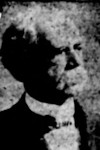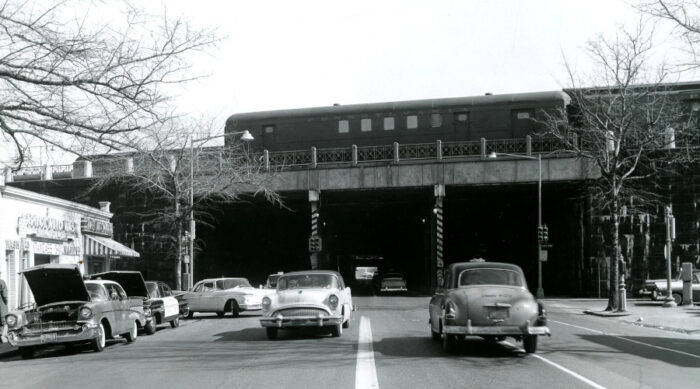
I am always on the lookout for tunnels on Capitol Hill to write about, but having recently read that the would-be putschists of January 6t used online resources to help in their planning for that day, I will, for now, restrict myself to tunnels that no longer exist.
Helping me here was a thread posted by friend of the blog Mark Eckenwiler, who looked at a 1968 aerial photograph of DC and pointed out some places of interest. One of them was that, at the time, H Street did not pass over the train tracks north of Union Station, but instead, went underneath – much like the K, L, and M Streets and Florida Avenue do today.
The original plan when Union Station was placed on the bucolic land just north of the Capitol was to simply replace all the streets that were being covered by the train tracks. Unsurprisingly, the local citizens, in particular those who were members of the Northeast Washington Citizens’ Association, were not pleased. In a resolution read by the chairman on the committee of railroads, William J. Frizzell (that’s him, above) and passed on January 13, 1902, they wrote:
What we regard as the most alarming part of the bill is the provision for vacating and closing H street northeast for a distance of 300 feet on either side of Delaware avenue. H street being the principal thoroughfare for our people […] we cannot for a moment consider a discussion of any such annihilating and obliterating proposition.
One of the items they listed as needing to be saved was the “street car line which affords ample rapid transit to our people in reaching their offices and places of business.”
Remarkably, Congress not only listened but acted, and a little over a month later, on February 22, 1902, an amended bill that kept H Street as a thoroughfare was introduced. It would, of course, be years before all the work was done, and the train tracks split H Street into two neighborhoods with distinct differences. The tunnel was over 800 feet long, and passed under some 30 sets of tracks.

In the 1970s, it was decided to replace the tunnel with a bridge. This was to try to encourage the revitalization of the H Street corridor that had been badly damaged in the riots of 1968. The Washington Post reported that the west end of H Street now boasted a “wide, convenient highway crossing the railroad tracks just north of Union Station.” They continued:
The overpass has made H Street a major commuting route as traffic from the west ours across the overpass, city planners say. Merchants agree that the overpass has brought new business.”
At the same time, a parking garage, accessible from the new H Street bridge, was built over the train tracks.
About twenty years later, the artist Deirdre Saunder found that the supposedly “wide, convenient bridge” was, in truth, “ugly,” and that children walking across it looked sad. She decided to do something about it, and designed a series of mosaics made of graffiti-proof tile arranged to look like children playing hopscotch. Sponsored by the Capitol Hill Arts Workshop, and supported by many donors, the mosaics were installed in the summer of 1997.
Today there are great plans afoot to deck over further areas of train tracks, which would make the H Street bridge more of a city street rather than just a connector between two vastly different stretches of the street.
